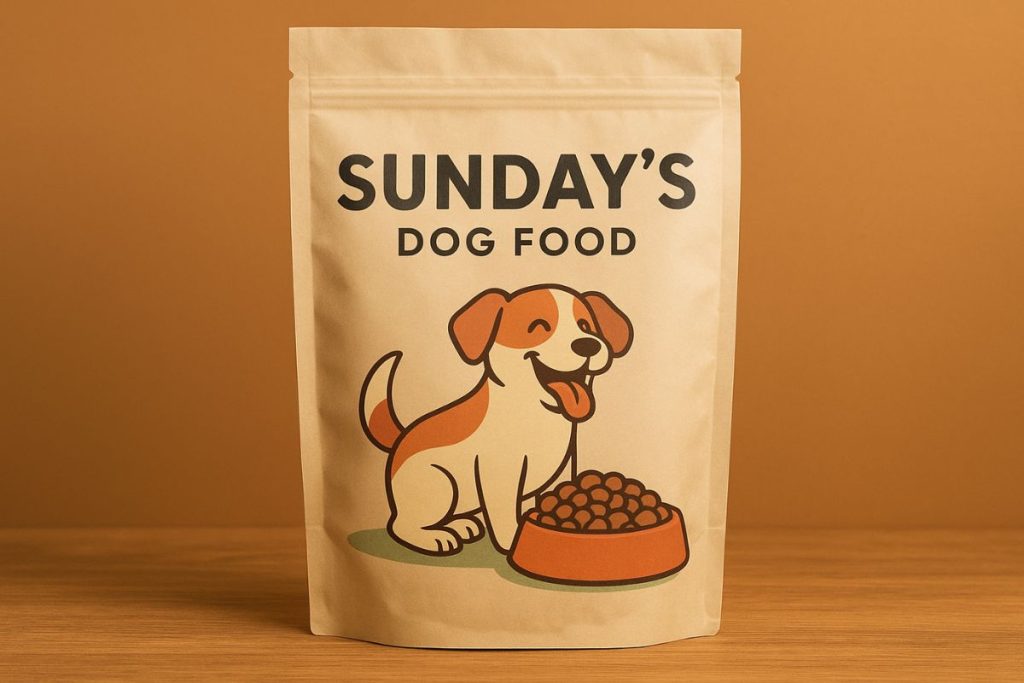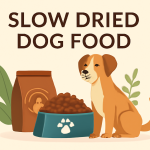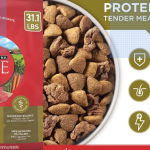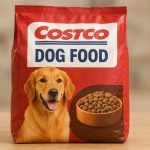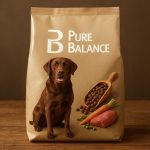Great! I’ll create a comprehensive, 4000-word SEO-optimized blog post about Sundays Dog Food and its air-dried healthy meals. The post will include the primary keyword ‘farmers dog food’ and seamlessly integrate related keywords such as ‘ollie dog food,’ ‘freshpet dog food,’ ‘raw dog food,’ and ‘grain free dog food.’
I’ll structure it with proper headings, keyword density, meta tags, and multimedia considerations to align with 2025 SEO best practices. I’ll let you know as soon as it’s ready for review.
Meta Title: Farmers Dog Food: Air-Dried, Healthy Meals for Dogs (60 char)
Meta Description: Farmers Dog Food vs Sundays: Discover how air-dried, vet-formulated meals compare to raw, grain-free, Ollie & Freshpet diets for optimal pup health.
Farmers Dog Food & Sundays: Air-Dried, Healthy Dog Meals
Choosing the right diet is vital for a dog’s health—especially now that roughly 59% of U.S. dogs are overweight or obese. Owners seeking better nutrition often compare fresh food brands (like Farmers Dog and Ollie) with new alternatives. One such alternative is air-dried dog food. For example, Sundays for Dogs offers air-dried, vet-formulated meals that aim to combine the benefits of raw and cooked diets. In this guide we’ll explain what air-dried dog food is, highlight the features of Sundays for Dogs, and compare this to fresh food options (The Farmer’s Dog, Ollie, Freshpet), raw diets, and grain-free foods. By understanding each, pet parents can make an informed choice for their pup’s nutrition.
What Is Air-Dried Dog Food?
Air-dried dog food is a type of minimally processed dog meal. It starts like a raw or fresh recipe – human-grade meats, fruits, vegetables, and grains are ground together. Then the mixture is gently dried with warm air at low temperatures. This process removes moisture but preserves nutrients and flavor. According to Sunday’s brand and other experts, air-drying “locks in peak flavors and nutrients” better than high-heat cooking. It also includes a kill-step to destroy bacteria. In practical terms, air-dried food ends up like jerky or beef-biltong – concentrated, shelf-stable pieces dogs love.
Image: A stainless-steel bowl filled with nutritious air-dried dog food.
Air-drying has key benefits over traditional kibble or homemade meals:
- Nutrient preservation: Gentle low-heat drying (~140–160°F) retains vitamins and proteins. Many fresh-food formulas cook only to preserve nutrients, similar to air-dried methods.
- Safety (kill-step): The drying process eliminates pathogens like Salmonella or E. coli, making it safer than raw diets.
- Convenience: Unlike frozen fresh foods, air-dried meals require no refrigeration. They come in resealable bags and can be scooped at meal time.
- High-quality ingredients: Air-dried foods typically use human-grade, whole-food ingredients. For example, Sundays lists “100% meat and superfoods, 0% synthetics” in each recipe.
Many owners find that dogs find air-dried meals palatable and digestible. As Sundays notes, the air-dried recipes often look and smell like treats – one reviewer even called them “treat-like” in texture. In a customer survey, 65% of dogs were more excited to eat on Sundays’ food, and 40% had softer coats. These anecdotal results suggest dogs enjoy the real-food aroma and high meat content.
Sundays for Dogs: Vet-Formulated Air-Dried Meals
Sundays for Dogs is a direct-to-consumer brand co-founded by a veterinarian. Their mission is “fresh dog food made easy” by using air-dried formulas. Key features of Sundays include:
- Human-grade, high-protein recipes: Every formula is made from real chicken, beef, or turkey, plus fruits, vegetables, and herbs. Unlike many dry kibbles, Sundays’ recipes contain about 90% meat. For example, the Beef recipe lists beef heart, liver, bone, plus veggies like kale and zucchini. High meat content means more protein and a taste that dogs love.
- No nasties: Sundays emphasizes no artificial additives. Their ingredient labels have “0% synthetics”. Indeed, reviewers note: “Sundays don’t use any additives, nasties, or preservatives”. This is ideal for dogs with sensitive stomachs or food sensitivities.
- Air-dried to lock nutrients: Rather than freeze-drying or high-heat cooking, Sundays air-dries its meals. This “cooks low and slow,” preserving vitamins and flavor. As their site notes, they gently air-dry ingredients at low temperatures to “kill germs and lock in nutrients”. The result is bite-sized, shelf-stable bites with a jerky-like texture.
- Convenience: Sundays food comes in dry form. There’s no thawing or prep. One simply scoops portions from the bag. The founder’s dog, who had a sensitive tummy, thrived on Sundays’ all-natural formula without upset. Reviewers appreciate that you “can remove dog food from your shopping list” since it’s shipped to the door.
- Cost savings (vs. fresh): One advantage of air-dried versus frozen fresh brands is cost. Sundays reports its meals are about 36% cheaper than feeding comparable fresh-dog-food plans. In practical terms, the Quality Edit review found Sundays cost roughly $2/day for an average dog, whereas The Farmer’s Dog was about $4/day. Even compared to fresh, humans-grade brands, Sundays can save around $70–90 per month.
In short, Sundays for Dogs offers air-dried, vet-formulated meals that combine high-quality ingredients with shelf-stable convenience. This makes them a compelling option for health-conscious pet parents.
Comparing with The Farmer’s Dog (Farmers Dog Food) and Other Fresh Meals
Many owners wonder how Sundays stacks up against established fresh-food brands, especially The Farmer’s Dog (sometimes called Farmers Dog Food for SEO). Both are human-grade and vet-designed, but they differ in form factor:
- Preparation & packaging: The Farmer’s Dog delivers fresh, gently-cooked meals in frozen pouches. You must store them in the freezer and thaw each portion. In contrast, Sundays’ air-dried food arrives ready-to-serve with no fridge needed. As a reviewer notes, The Farmer’s Dog must be thawed overnight, whereas Sundays can be scooped directly from the bag. This makes Sundays much easier for travel or last-minute feeding.
- Ingredients & nutrition: Both brands use human-grade meats and are balanced by nutritionists. For example, The Farmer’s Dog and Sundays recipes include real meat, veggies, and healthy oils. However, The Farmer’s Dog meals are about 50–60% water (cooked moisture), whereas Sundays are dense (90% meat solids). If you compare a chicken recipe, Sundays’ has no synthetic additives and no filler grains, while The Farmer’s Dog might include some grains like rice for balance. The exact formulations vary, but both brands aim for complete nutrition.
- Diet customization: Both companies tailor meals to your dog. You’ll answer questions (age, weight, activity) and receive a custom feeding plan. Either diet can address allergies or weight goals by selecting recipes (e.g. turkey for novel protein, beef for high activity, etc.). However, some dogs with specific needs might benefit from The Farmer’s Dog’s extensive flavor options or a prescription diet (though both companies offer variety).
- Cost: As noted, Sundays tends to be cheaper per meal. The Farmer’s Dog meals are high-quality but come at roughly double the daily cost for the same dog. This is partly because freezing and shipping fresh food requires more logistics. Sundays claims up to 55% savings over frozen fresh options. Still, both are pricier than standard kibble; they’re premium food brands.
Image: A beagle dog enjoying a bowl of nutritious air-dried dog food.
In real-life trials, both diets have fans. The Quality Edit review found a “tie” in taste – some dogs loved Sundays’ jerky-like bites, others loved The Farmer’s Dog’s meaty stews. Importantly, neither diet upset the dogs’ tummies. The convenience factor often sways owners: one wrote, “All I need to do is scoop and serve… no pouches to defrost or cut open!”. That ease (and the pocket-sized treats texture) won over many picky eaters.
Fresh, Raw, and Grain-Free Dog Food Options
Sundays and the Farmer’s Dog represent fresh or gently-prepared diets. Other popular categories in the dog food market include:
- Fresh or “human-grade” dog food: This includes Farmers Dog Food, Ollie dog food, Nom Nom, etc. These are real, minimally processed meals often delivered refrigerated or frozen. For example, Ollie’s website highlights its fresh recipes: all human-grade ingredients, cooked in small batches, no fillers or by-products. Freshpet is another brand making refrigerated meals found at grocery stores; it boasts high-quality proteins and improved digestion thanks to whole-food ingredients. Fresh diets are highly digestible (often ~40% more digestible than kibble) because they use whole meats, veggies, and healthy fats. Many pet parents report shinier coats, better weight management, and more energy on these diets.
- Raw diets: These are diets of uncooked meats, organs, and bones. Advocates cite benefits like shinier coats, healthier skin, increased energy, and smaller stools on raw diets. However, raw feeding requires careful handling. The AVMA warns that raw feeding poses pathogen risks unless meat is properly treated. In fact, air-dried food is often recommended as a safer alternative to raw diets since it kills bacteria while keeping nutrients. Raw diets are typically fed to healthy adult dogs only; households with young children or immune-compromised people are often advised against it. Puppies and sick dogs usually do better on cooked or air-dried diets.
- Grain-Free dog food: These are diets that use no traditional grains (corn, wheat, rice, oats). They became popular due to concerns about grain allergies. However, nutrition experts (and the FDA) note that true grain allergies are rare in dogs. Most dogs allergic to food are reacting to a protein (beef, chicken, etc.), not the grain. Kibble and many dog foods traditionally include grains for carbohydrates and fiber. As the AKC notes, “grain-free diets exist, but carbohydrates are required for energy, and the choice of grain is important”. In other words, whole grains like brown rice or oats can be a healthy part of a dog’s diet unless a vet identifies a specific allergy. Some grain-free dog foods substitute legumes or potatoes, but these too can have issues (some grain-free foods were under investigation for links to heart disease). In general, most dogs do fine on grain-inclusive diets, and fresh or air-dried foods often include grains like quinoa or oats for balance.
Ollie and Freshpet are good examples of fresh food brands to know. Ollie offers pre-portioned patties of cooked meat and veggies; their site stresses human-grade ingredients and USDA-inspected kitchens. Freshpet (found in stores) uses steam-cooked meals in refrigerated packs; they emphasize natural ingredients and claim benefits like “picky eater approved” and improved coat health. In contrast, Sundays’ air-dried format doesn’t need refrigeration but still shares those diet principles (high meat, whole foods). Depending on your lifestyle, any of these could be a good choice.
To summarize key differences:
- Kibble: Widely available, shelf-stable, but highly processed and often contains fillers. Modern kibble can be complete if high-quality, but it requires preservatives and may be heavy in carbs.
- Canned/Fresh: Fully cooked or gently cooked, moist food. Very palatable and nutritionally dense. Needs refrigeration or has shorter shelf life. Good for picky or older dogs.
- Air-Dried (Sundays): Combines raw-like nutrition with kibble-like convenience. No need to refrigerate; high protein content; limited flavors (Sundays has 3 recipes). Easy to feed by scooping.
- Raw/Freeze-Dried: Offers raw nutrition; freeze-dried requires rehydration; fresh raw needs careful handling. Can improve coat and energy but riskier for pathogens.
- Grain-Free: Only needed if a vet diagnoses a grain allergy. Otherwise, whole grains can be beneficial. Many “grain-free” formulas ended up using legumes or potatoes for carbs, which is a complex topic (some dogs thrived, others did not).
Choosing the Best Healthy Dog Food: Tips & Considerations
With so many options, how do you choose? Here are some guidelines:
- Consult your vet: As with any diet change, talk to your veterinarian—especially if your dog has health issues. A vet can help spot allergies and recommend an appropriate diet. Many fresh-food companies (The Farmer’s Dog, Ollie, Sundays, Freshpet) work with veterinary nutritionists to ensure their formulas meet AAFCO standards. Always ensure any food is labeled “complete and balanced.”
- Look at ingredients: The first ingredient should be a real meat (chicken, beef, fish, etc.), not a by-product. Avoid foods with vague terms like “meat meal.” Sunday’s recipes list specific organs and cuts (e.g., “beef heart, chicken liver”), which is ideal. Premium foods should have a recognizable ingredient list.
- Avoid fillers: Grain-inclusive diets are fine for most dogs, but steer clear of excessive fillers or artificial preservatives. Check that the food uses whole grains (if any) and real fruits/veggies for fiber and vitamins. Sundays for Dogs, for example, advertises “no synthetics” and lists superfoods like kale, blueberries, and sweet potatoes in its recipes.
- Consider your dog’s needs: High-energy or working dogs may benefit from higher protein/fat foods (like beef-based or fish-based diets). Senior or lower-activity dogs may need lower-calorie formulas to maintain weight. Pet obesity is a big concern; choosing nutrient-dense foods and watching portions is key.
- Transition slowly: When switching foods (especially to something richer than kibble), mix the new food in gradually over 7–10 days. This helps prevent digestive upset. Many subscription fresh-food services (Ollie, Nom Nom, Sunday’s) provide a transition plan to ease the switch.
- Try samples: If possible, test a small pouch of an air-dried or fresh diet before committing. Dogs have individual tastes, and what one pup loves another may refuse. According to surveys, many dogs find air-dried meals very tasty – in one survey, 65% of dogs showed more excitement at mealtime with Sundays food. If your dog is picky on kibble, a fresh or air-dried formula might change that.
Finally, remember that quality dog food can be an investment. High-quality fresh or air-dried diets cost more than basic kibble, but you’re paying for human-grade ingredients and often seeing health benefits. As one review noted, people were willing to pay a “premium” price for better nutrition. Consider it like cooking a quality meal for yourself every day – it’s an investment in long-term health.
Frequently Asked Questions (FAQs)
Q: What makes Sundays’ air-dried dog food different from regular kibble?
A: Regular kibble is cooked at very high heat and dried completely, which can degrade some nutrients. In contrast, air-dried dog food like Sundays is gently cooked with low, circulating heat, similar to freeze-drying. This preserves more nutrients and flavor while still killing pathogens. Air-dried meals have a jerky-like texture (no need to add water) and retain more of the natural taste.
Q: Is “Farmers Dog Food” the same as the brand The Farmer’s Dog?
A: The term Farmers Dog Food typically refers to The Farmer’s Dog brand, which is a popular fresh-dog-food company. The Farmer’s Dog uses cooked, human-grade meats delivered frozen. It’s different from Sundays: The Farmer’s Dog must be refrigerated and thawed, whereas Sundays’ air-dried meals do not. Both use high-quality ingredients, but one is frozen-cooked and the other is shelf-stable dried.
Q: Are air-dried dog foods like Sundays truly healthy?
A: Yes, generally. Air-dried brands emphasize whole-food ingredients (meat, organs, vegetables). Sundays, for example, lists things you might put in a salad – beef, chicken, fish oil, quinoa, carrots, fruits, etc.. There are no artificial preservatives, and the drying process keeps nutrients intact. According to research, diets like this can improve coat quality, digestion, and energy compared to low-quality kibble. As always, check that the food is complete and balanced for your dog’s life stage.
Q: What is the difference between fresh, air-dried, and raw dog food?
A: Fresh dog food (like Ollie, Freshpet, or The Farmer’s Dog) is cooked or gently prepared and usually refrigerated/frozen. Air-dried food (Sundays) is cooked at low temperature and dried to remove moisture – it’s shelf-stable. Raw food is uncooked meat and bones. Raw advocates say it’s very nutritious, but it can carry pathogens unless frozen or dried properly. Air-dried is often seen as a safer alternative to raw, because it includes a kill-step while still retaining raw-like nutrition.
Q: Do dogs need grain-free food?
A: Not necessarily. True grain allergies in dogs are rare. Most dogs digest grains like rice, oats, or barley quite well, and grains provide essential energy. According to the AKC, grain-free diets “exist, but carbohydrates are required for energy,” so including whole grains can be beneficial. A grain-free diet is only needed if your dog has a diagnosed grain allergy (confirmed by a vet). For most dogs, a balanced diet with grains (or alternatives like quinoa/sweet potato) is perfectly healthy. If you choose a grain-inclusive diet, look for quality grains and proteins first on the label.
Q: Can I mix air-dried food with other food?
A: Yes, many owners use air-dried meals as toppers or mix-ins. For example, you can sprinkle Sundays air-dried bites on your dog’s regular food to entice picky eaters. Some even use them as training treats because of their savory flavor. If you feed an air-dried meal as the main diet, just ensure portion sizes match your dog’s needs and that it’s a complete formula (Sundays says their recipes are balanced). Always transition any new food gradually over several days to avoid digestive upset.
Conclusion
Finding the healthiest dog food depends on your dog’s needs and your lifestyle. If you want the nutrition of fresh food with the convenience of dry food, Sunday’s air-dried meals are a smart option. They use human-grade, high-meat recipes with no artificial additives, and the air-drying process preserves nutrients and flavor. This stands in contrast to brands like The Farmer’s Dog, which also use top-quality ingredients but require freezing and thawing.
Other alternatives include fresh-refrigerated diets (Ollie, Freshpet) and raw diets, each with their own pros and cons. Fresh diets often need refrigeration but can improve coat shine and energy. Raw diets may boost vitality but require careful handling. Grain-free diets are only necessary for dogs with grain allergies; for most pups, balanced whole grains are fine.
Ultimately, Farmers Dog Food (The Farmer’s Dog) and Sundays both aim to give dogs better nutrition than kibble. Many reviews, including ours, note that dogs thrive on these diets – more energy, healthier weight, and enthusiasm at mealtime. If you’re curious, you can try Sundays risk-free (often with first-order discounts) or sample a few meals. Just remember to transition gradually and consult your vet for personalized advice.
Have you tried Sundays or other fresh dog foods? Share your thoughts in the comments below! If you found this guide helpful, share it on social media to help other pet parents. For more information on dog nutrition, check out other articles in our Pet Health series and follow us for updates. Keeping our furry friends healthy starts with the food in their bowl – here’s to happy, healthy pups and well-informed pet parents!
Sources: Authoritative pet nutrition sites and reviews (as cited above).

